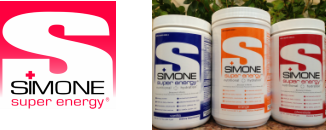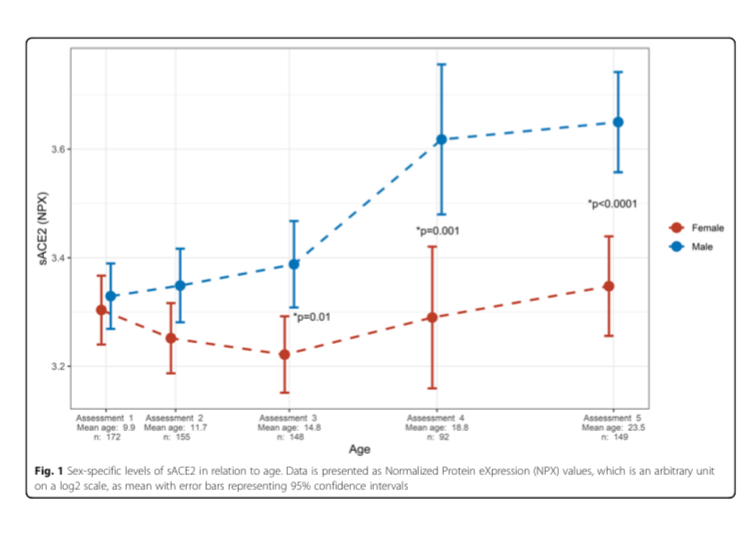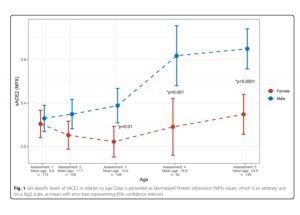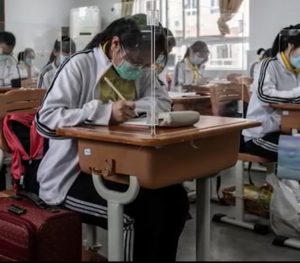We do not diagnose disease or recommend a dietary supplement for the treatment of disease. You should share this information with your physician who can determine what nutrition, disease and injury treatment regimen is best for you. You can search this site or the web for topics of interest that I may have written (use Dr Simone and topic).
“We provide truthful information without emotion or influence from the medical establishment, pharmaceutical industry, national organizations, special interest groups or government agencies.” Charles B Simone, M.MS., M.D.
HOW TO OPEN SCHOOLS
https://bit.ly/2WV5nVB
Lawrenceville, NJ (Charles B Simone, M.MS., M.D.) – Our plan for How To Open Schools.
1) Starting in ninth grade separate the female students from the male students.
Put 25% more females in an all female classroom and 25% fewer males in an all male classroom.
COVID-19 (SAR-CoV-2) affects more adults than children and more males than females. At age 15 or so, males begin to have more ACE2 compared to females. Estrogen suppresses the renin-angiotensin system and therefore results in fewer ACE2 molecules for females.
(https://academic.oup.com/cardiovascres/article/53/3/672/327796Renin angiotensin system and gender differences in the cardiovascular system)
COVID-19 attaches and infects cells that have ACE2 receptors (heart, lung, intestine, kidney, eye, blood vessels). During infection an enzyme (ADAM-17) can cleave off the cell’s membrane ACE2 resulting in shedding of ACE2 in the blood (soluble ACE2). Soluble ACE2 can reflect the amount of cell membrane ACE2. The more ACE2, the more infection. https://ccforum.biomedcentral.com/track/pdf/10.1186/s13054-020-02942-2
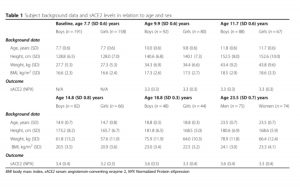
2) All children wear facial shields primarily and masks as well most of the time. Medically certified asthmatics will need some time without masks.
3) All children frequently use safe hand sanitizer.
4) All desks are to have plastic panels surrounding three sides of the desk
5) Schools should upgrade to MERV 13 or better air filters to filter out viruses according to the American Society of Heating, Refrigerating and Air-Conditioning Engineers (ASHRAE).
6) Follow CDC Guidelines for Preparing K-12 School Administrators for a Safe Return to School in Fall 2020https://www.cdc.gov/coronavirus/2019-ncov/community/schools-childcare/prepare-safe-return.html

August 1, 2020
Children and adolescents have natural protection rather than immunity from COVID-19 because they have few ACE2 receptors on their cells unless they have risk factors that increase the number of ACE2. COVID-19 attaches to ACE2, so the more you have, the higher the infection risk. Estrogen in females causes fewer ACE2. However, males make more ACE2 starting at age 15. Understandably, non-medical people might mistakenly say children are immune to COVID-19 instead of children have natural protection.
We reported on risk factors in March 2020.
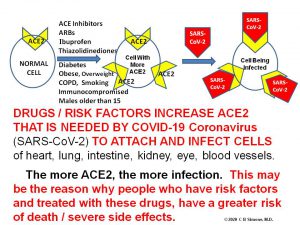
Two new studies in New England Journal of Medicine show that risk factors increase risk for Multisystem Inflammatory Syndrome. The new CDC data show similar risk factors for hospitalized children less than 18 years old: older males; any coexisting condition; obesity; lung respiratory problems; Immunocompromise / Autoimmune Disease; Cardiac disease.
| Multisystem Inflammatory Syndrome | Feldstein Study | Dufort Study |
| Total Patients | 186 | 99 |
| Males | 62% 0-20 y |
54% 0-20y
58% 13-20y
|
| Age | 40% 10-20 y | 26% 13-20y |
| Underlying Condition | ||
| Any Coexisting Condition | 27% overall |
36% overall
46% 13-20y
|
| Obese | 37% overall |
29% overall
31% 13-20y
|
| Respiratory | 18% overall |
14% overall
29% 13-20y
|
|
Immunocompromise
Autoimmune
|
5% overall | |
| Cardiac | 3% overall |
|
CHARACTERISTIC |
All ages
No./Total no. (%)
|
0-2 years
No./Total no. (%)
|
2-4 years
No./Total no. (%)
|
5-17 years
No./Total no. (%)
|
| Gender (N=576) | ||||
| Male | 292/576 (50.7) | 106/188 (56.4) | 25/50 (50.0) | 161/338 (47.6) |
| Female | 24/526 (4.6) | 9/162 (5.6) | 2/46 (4.3) | 13/318 (4.1) |
| Any underlying condition | 94/222 (42.3) | 14/65 (21.5) | 9/24 (37.5) | 71/133 (53.4) |
| Obesity | 42/111 (37.8) | N/A | 6/18 (33.3) | 36/93 (38.7) |
| Chronic lung disease | 40/222 (18.0) | 2/65 (3.1) | 4/24 (16.7) | 34/133 (25.6) |
| Asthma | 30/222 (13.5) | 1/65 (1.5) | 0/24 (0) | 29/133 (21.8) |
| Prematurity gestation<37 wk | 10/65 (15.4) | 10/65 (15.4) | N/A | N/A |
| Neurologic disorder | 31/222 (14.0) | 6/65 (9.2) | 7/24 (29.2) | 18/133 (13.5) |
| Immunocompromise | 12/222 (5.4) | 0/65 (—) | 2/24 (8.3) | 10/133 (7.5) |
| Chronic metabolic disease | 10/222 (4.5) | 1/65 (1.5) | 0/24 (—) | 9/133 (6.8) |
| Diabetes mellitus | 6/222 (2.7) | 0/65 (—) | 0/24 (—) | 6/133 (4.5) |
| Blood disorders | 8/222 (3.6) | 0/65 (—) | 0/24 (-) | 8/133 (6.0) |
| Cardiovascular disease | 7/222 (3.2) | 2/65 (3.1) | 2/24 (8.3) | 3/133 (2.3) |
| Congenital heart disease | 4/222 (1.8) | 2/65 (3.1) | 1/24 (4.2) | 1/133 (0.8) |
© 2020 Charles B. Simone, M.MS., M.D.
